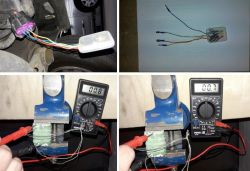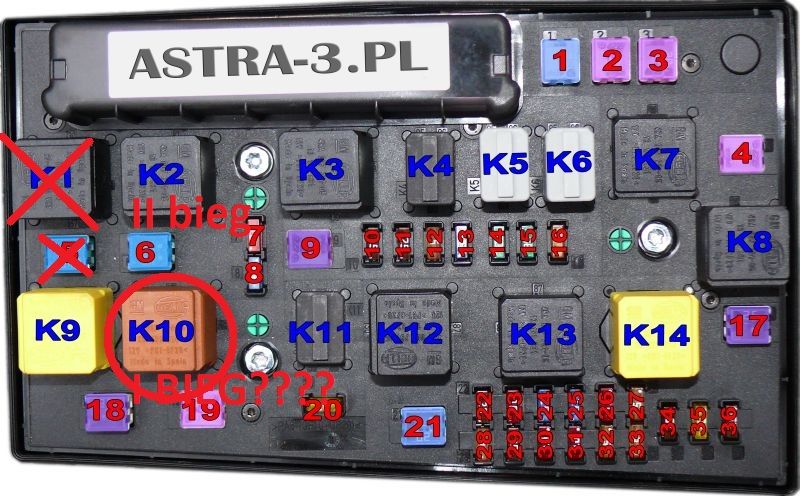Hello.
I am assuming a new thread, as well as a non-standard repair.
And so:
How many Asterek users have a fault with the 1st speed of the radiator fan.
The Astra H 1.6XEP has two speeds of the radiator fan motor, although the entire electrical system is adapted to three (3 relays: No. 11, 12, 13; wiring, double-winding resistor: 0.8 ohms / 0.7 ohms - 1st and 2nd gear).
The controller gives the signal only to two relays, i.e. 12 and 13, and 11 does not work at all - checked with a simple device on three LEDs.
Anyway, it is shown in the diagram - Annex
Thus, one resistor winding remains idle all the time and does not burn out over time.
If we want the easiest way and cost-free to resuscitate the radiator fan resistance,
then unscrew the resistor from the fan (you have to pick up the car and lie down under it - good access),
unscrew the resistor housing (torx 20), open it (pry with a flat screwdriver and then bridge the two middle pins).
Just in case, you can remove the relay 11 from the fuse box, if you are concerned.
We enjoy the work of the resistor for the next 10 years :)
(unfortunately I did not do that, I cut off the resistor and I will install the power resistors in its place - I will describe in a separate post)



I am assuming a new thread, as well as a non-standard repair.
And so:
How many Asterek users have a fault with the 1st speed of the radiator fan.
The Astra H 1.6XEP has two speeds of the radiator fan motor, although the entire electrical system is adapted to three (3 relays: No. 11, 12, 13; wiring, double-winding resistor: 0.8 ohms / 0.7 ohms - 1st and 2nd gear).
The controller gives the signal only to two relays, i.e. 12 and 13, and 11 does not work at all - checked with a simple device on three LEDs.
Anyway, it is shown in the diagram - Annex
Thus, one resistor winding remains idle all the time and does not burn out over time.
If we want the easiest way and cost-free to resuscitate the radiator fan resistance,
then unscrew the resistor from the fan (you have to pick up the car and lie down under it - good access),
unscrew the resistor housing (torx 20), open it (pry with a flat screwdriver and then bridge the two middle pins).
Just in case, you can remove the relay 11 from the fuse box, if you are concerned.
We enjoy the work of the resistor for the next 10 years :)
(unfortunately I did not do that, I cut off the resistor and I will install the power resistors in its place - I will describe in a separate post)








